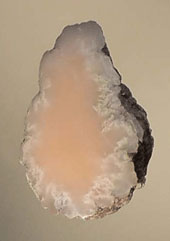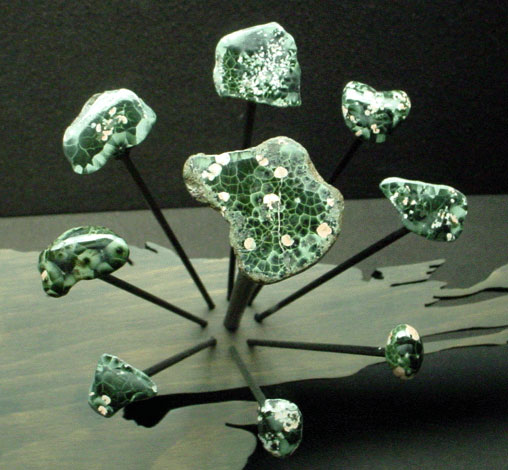| Home | AmMin | GMR | RiMG | Collectors Corner | Directory | Short Courses | |
|
|
|||||||

|
VIRTUAL FIELD TRIP TO THE KEWEENAW PENINSULA, MICHIGAN - MINERALOGY (LAPIDARY MATERIALS)
|
Lapidary material from the district includes the most diverse collection of datolite colors. The datolite is found as nodules of massive, finely crystalline, material. The nodules usually do not show any datolite on the surface and are recognizable primarily due to the surface texture of the nodules (they look like the surface of cauliflower). These nodules have grown in gouge zones of small faults in a clay matrix. The porcelain habit of datolite is also found as a vein filling material, but is difficult to recognize on the mine dumps. The commonest color is white. Also occurring is blue ( colored by oxidized copper compounds), red, orange, green, mauve, brown, black, and yellow. |
|
|
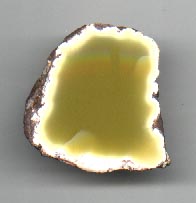 |
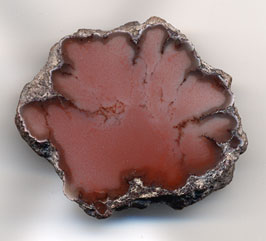 |
| Datolite from Iron City Mine 3.5 cm x 5.5 cm. | Datolite nodule recovered from Lake Superior near Copper Harbor. 3 cm across. Yellowish shades are some of the rarest colors for datolite. Specimens are recovered from "outcrops" by scuba diving in the lake. | Datolite from the Delaware mine. 3.5 cm x 4.5 cm. |
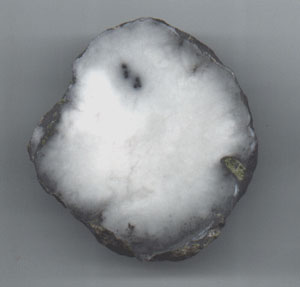 |
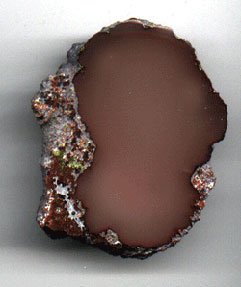 |
| White datolite from the Quincy mine 5cm across. | Light brown datolite from the Knowlton lode, Caledonia mine. |
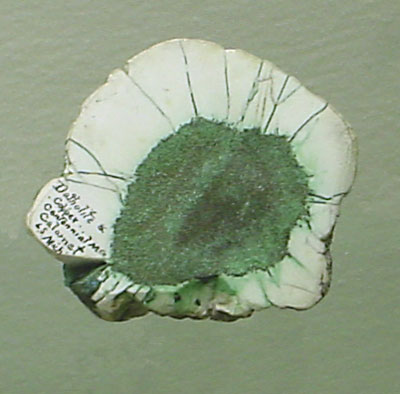 |
| Datolite with altered copper inclusions. Centennial mine. Seaman Museum specimen JTR348. Specimen is 5 cm. across. |
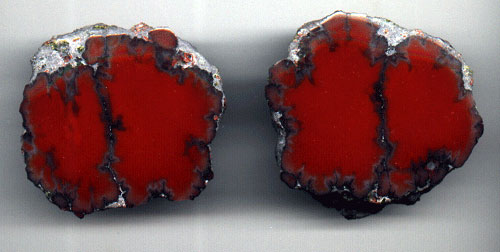
Datolite from the Knowlton lode, Caledonia mine ( 5 cm across). Nodule halves are bright brick red. They were found in a small area in the mine and only two or three flats of the material were recovered.
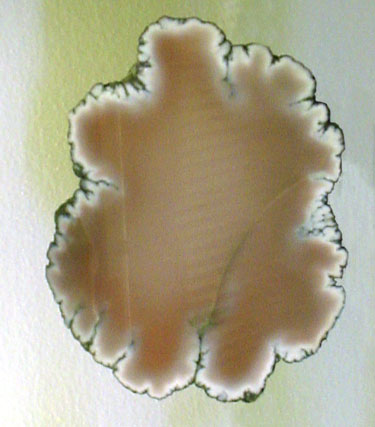 |
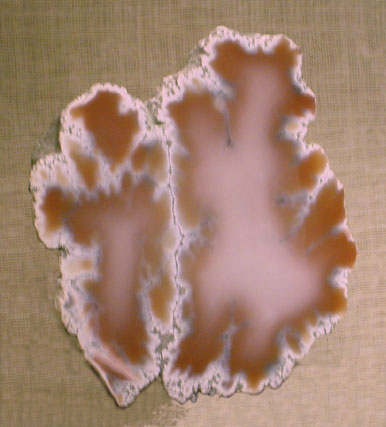 |
| Datolite, Delaware mine. Seaman Museum specimen # DCG2085, 15 cm. high. | Datolite, Isle Royale mine. Seaman Museum Pam & Jerry Hall collection, 17 cm. across. |
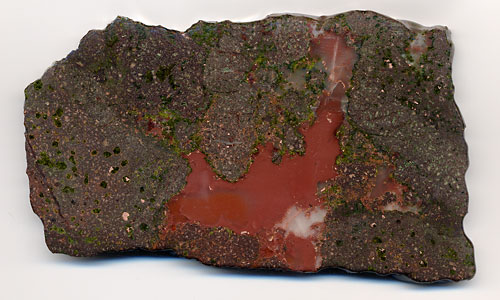 |
| Red datolite in a vein in the Knowlton amygdaloid, Caledonia mine. Specimen is 13 cm. across. The specimen contains numerous small masses of native copper and there is a fair amount of green epidote replacing minerals from the basalt. |
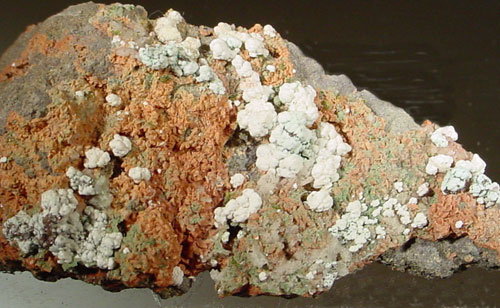 |
| Datolite often occurs in "nests" of multiple individual nodules. Here it occurs as multiple nodules, albeit of very small size. Franklin mine 3cm across |
|
Seaman Museum datolite page.
Chlorasterite is a massive, but polishable variety of the mineral pumpellyite. It is the official gemstone for the state of Michigan. Seaman Museum display - largest sample is 4cm.
Lake Superior agates are found on several beaches on the North and West shores of the Keweenaw peninsula. The classic Lake Superior agate is a brown/red and white finely banded agate, although many other types are found in the area. When looking on the beaches ( especially when the rocks are wet), the agates display a more translucent (like caramel candy) luster than the volcanic rocks which make up the majority of the beach rocks. The specimens below are all cut and polished. |
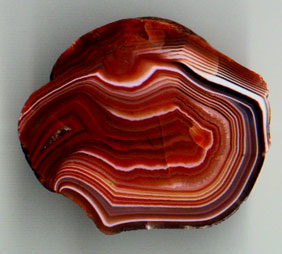 |
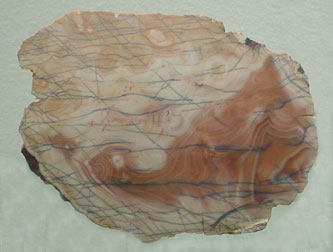 |
| Lake Superior agate with the typical brown/red and white shades and fine banding. Specimen is 4cm high. | Lake Superior agate, High Rock Bay. Seaman Museum specimen - D. C. Gabriel collection, 10 cm. across |
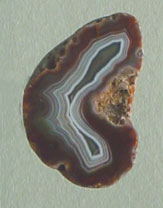 |
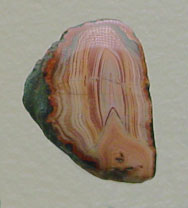 |
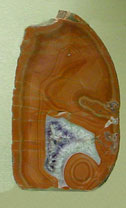 |
| Lake Superior agate, Agate Beach, Seaman Museum specimen DCG 518, 4 cm.. | Lake Superior agate (flame), Keweenaw County, Seaman Museum specimen DCG 1055, 6 cm. | Lake Superior agate with amethyst, Michipicoten Island, Seaman Museum specimen DCG1104, 10 cm. high. |
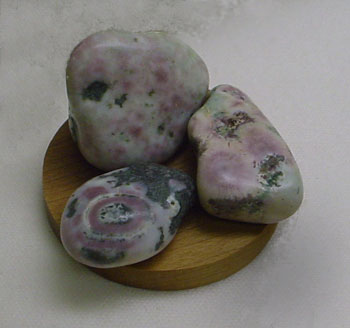
Pink prehnite from amygdaloids. Seaman Museum specimen 1.5 cm.
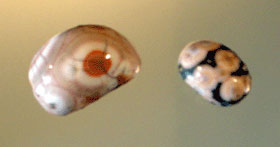 |
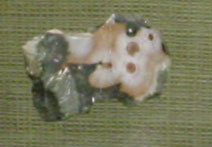 |
| Thomsonite from amygdaloids in the volcanics Grand Marais, Minnesota. Larger specimen is 2 cm.. Thomsonite from Michigan in general are less brightly colored compared to those from Minnesota ( most of what is called thomsonite is actually prehnite). | Thomsonite and mesolite from Thomsonite Hill, Keweenaw Co. Mi. Seaman museum specimen. 2 cm. across. |
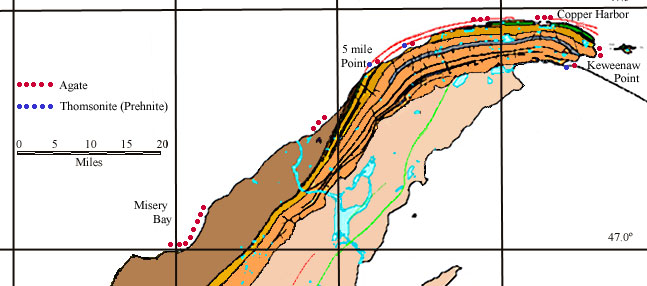
|
Agate and thomsonite (prehnite) beaches. After the Rockhound guide, Keweenaw
Tourism Council. This is not an exhaustive map of localities, as agates may be
found along the north shore of the Keweenaw peninsula and prehnites may be found
in areas of outcrops of the Portage Lake volcanics and the Lake Superior traps.
Other material that has been used in lapidary applications include: Native copper-bearing rock has been polished or coated with plastic in slabs and used for bookends. Copper inclusions in agate from the Wolverine #2 shaft. Additional photos of Lapidary Material |
